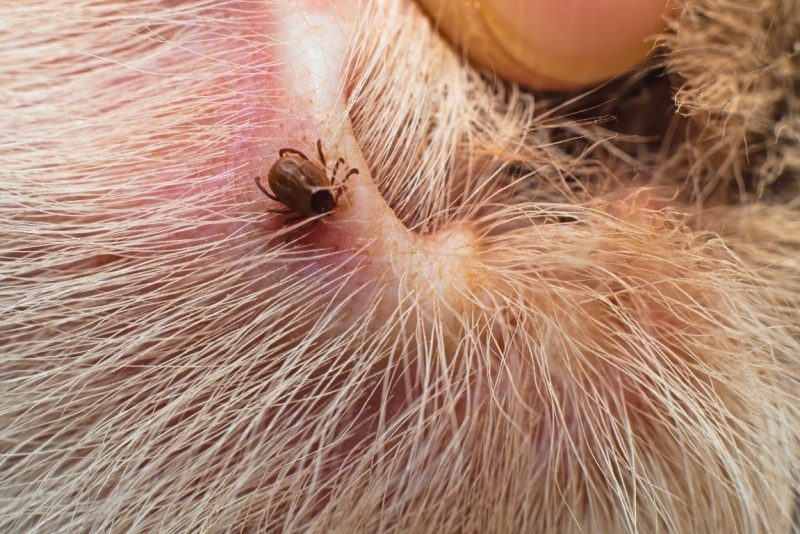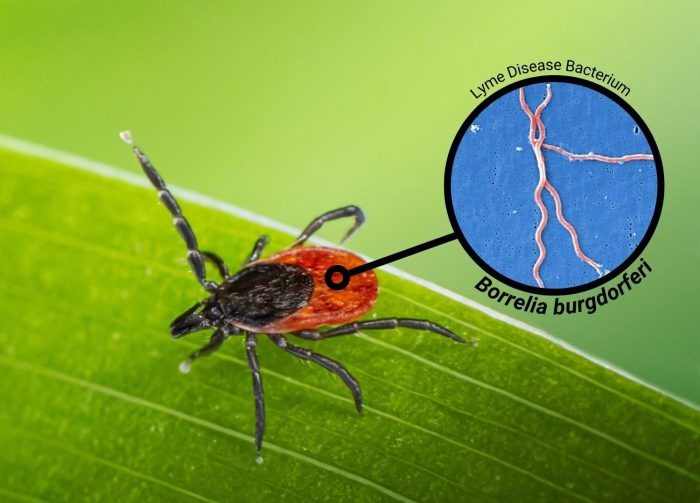280 Sheppard Ave E. Unit 102, Toronto, ON M2N 3B1 | 647-260-8387 | yonge.sheppard.vets@gmail.com
Tick Talk
A Pet Owners Guide to Ticks and How to Keep your Furry Friend Safe from these Tiny Troublemakers
Ticks are parasitic arachnids (AKA spiders) that survive by feeding on the blood of animals including dogs, cats and humans. Ticks range in size depending on their life stage maturity and gender. An adult female may be as large as half a cm, whereas a baby tick might be as small as a poppy seed.

Topics Covered
In Canda there are more than 40 species of ticks but the most established ticks in our area are:
a) Ixodes scapularis = Blacklegged (Deer) Tick
b) Dermacentor variablilis = American dog Tick
Blacklegged Tick

American Dog Tick

The images above were sourced from Tick Talk Canada, a website by the Canadian Veterinary Medical Association that is updated annually to educate Canadians and help protect pets and their families from these nasty little bugs
Where can Ticks be found?
Ticks prefer to live in wooded areas in tall grasses and under leaf litter. However, with the increased prevalence of ticks in Toronto, ticks can also routinely be found in urban areas like city parks and other green spaces.

Compiled Lyme Disease Estimate Risk Areas Map from 2016 – 2023, showing the spread of blacklegged ticks northward in the province. Estimated risk areas are a 20 km radius from the centre of a location where blacklegged ticks were found through drag sampling. This map has been published annually by Public Health Ontario since 2016. Passive surveillance is initially conducted, taking into account ticks sent by the public and healthcare providers for identification, exposure location information from locally acquired human Lyme disease cases, as well as if the areas of intertest are suitable tick habitats. Once the aforementioned passive surveillance criteria has been met, drag sampling is conducted over the course of six hours at two different time points between May and October to actively find blacklegged ticks and confirm they are present in the area.
When can we expect to find Ticks?
Ticks start to look for a meal anytime the temperature is above freezing (0°C). This means that ticks are most active in our area in the spring and fall weather. But with warmer winters increasingly more common, there the risk for ticks persists even in our winter months. For this reason, our most aggressive tick prevention strategies should be performed from March through to November, but should be considered year-round.
Disease Transmission
As if the idea of a blood thirsty spider isn’t enough of a reason to avoid ticks, these little vampires also transmit serious diseases to both humans and pets. In our area the most prevalent disease transmitted by ticks is Lyme disease.

What is Lyme Disease?
Lyme disease is caused by a bacterium called Borrellia burgdorferi. Unlike humans, most dogs that contract Lyme disease will not show any signs of illness or get sick. When dogs do get sick it usually manifests as mild joint pain or low-grade fever. This usually develops 2-6 months after a bite. A small percentage of dogs will develop life-threatening kidney infection. For this reason, if you do find a tick on your dog your veterinarian will likely recommend testing for Lyme disease 2 months after potential exposure and screen your dog for kidney disease if positive.
How to Avoid Ticks
By helping to identify and avoid ticks in our pets, we can also help keep ourselves healthy.
1. Check your pet for ticks whenever they have been outside. Starting at your pet’s head run your fingers like a comb run your hands over your pets full body. You are feeling for lumps/skin tags. Another helpful way to pick up ticks that are still crawling around trying to find a place to feed is to run a lint roller over the entire surface of your dogs Ticks that have latched on to an animal will look like a black or grey skin tag. Tick hot spots include under your pet’s colour, groin area, under font legs, and around the ears.
From the CDC: Preventing ticks on your pets.
2. Remove any attached ticks within 24hrs of attachment. It typically takes 24-48hrs before a tick can successfully transmit disease to your pet. By identifying and removing ticks in a timely fashion you can prevent Lyme disease.
3. Keep your pet on an approved parasiticide licenced for tick prevention whenever your pet could be exposed to ticks. The class of parasiticides known as Isooxazolines are safe and incredibly effective at killing ticks. Isooxazolines are included in products like Simparica, Bravecto and Nexgard. Any pet that goes outside should be on tick prevention. It is most important that pets be on tick prevention from March to November, and as temperatures rise and our winters get warmer consideration is given to year-round protection. Remember ticks look for a meal as soon as the temperature is above freezing.
Bonus these medications are also excellent at controlling other yucky parasites like fleas and mange.
Keeping your pet on tick prevention also helps kill ticks which means one less tick in the world that might transmit Lyme disease to you or your family.
How to Remove a Tick Safely
If you find a tick on your pet it is important to remove them promptly and safely. Remember it takes at least 24hrs before a tick can transmit disease, which means prompt and safe removal can help keep you pet safe from disease. When removing a tick it is important to remove the whole thing. If parts of the tick is left behind it can cause inflammation and infection. Because ticks have evolved highly specialized mouthparts removing a tick in its entirety can be easier said than done. Here are some options:
Using tweezers grasp the tick as close to the skin as possible and pull straight out without squeezing the body.
2. Use a Tick twister: Hook the tick twister around the ticks’ body until it is held securely between the two prongs with the base of the prongs lying flat along the skin near the point of attachment. Lift the hook very lightly and turn it. The tick usually detaches itself after 2-3 rotations.

From Tick Twister® by O’TOM. 1. Select a tick twister sized appropriately for the size of tick being removed. 2. Hook the tick twister around the ticks’ body until it is held securely between the two prongs with the base of the prongs lying flat along the skin near the point of attachment. 3. Lift the hook very lightly and turn it.
3. Call your vet – we can help!
Congratulations, pet parent! You’re now equipped with the know-how to safeguard both you and your furry family member from ticks. Make it a habit to check for ticks regularly and ensure your pet stays on prevention whenever temperatures rise above freezing. Have more questions? Please don’t hesitate to get in touch – we’re here to help you navigate the world of pet health with confidence and care.
– The Yonge Sheppard Animal Hospital Team 🐾💚

